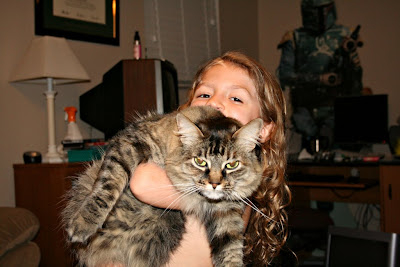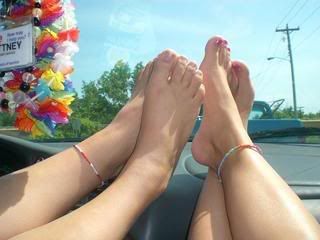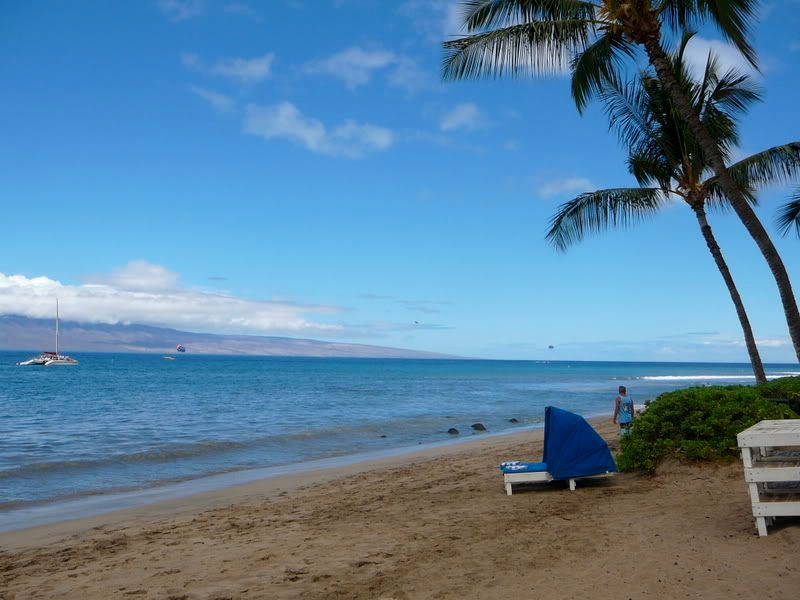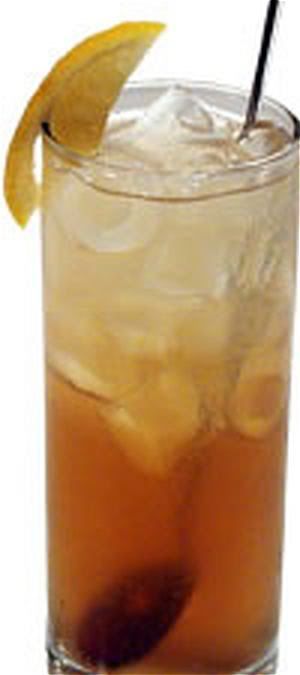Friday, April 25, 2008
Tuesday, April 22, 2008
Happy Earth Day!
46 simple ways to help the environment
THE DISHWASHER: Use it. Contrary to popular eco-belief, it's greener than hand-washing - if you run it with full loads and scrape rather than rinse. The average dishwasher in American homes today uses 8.7 gallons of water a load. Washing by hand for 10 minutes with water running can use 20 gallons. If you fill the sink, you still use about 5 gallons for washing, 5 for rinsing.
LAUNDRY: Wash only full loads of laundry and save (the average American home) as much as 3,400 gallons of water a year.
DRYING LAUNDRY: Do not over-dry laundry. An electric dryer operating an extra 15 minutes a load can cost you up to $34 a year in wasted energy; a gas dryer, $21 a year. If your dryer has a moisture sensor that turns the machine off automatically when clothes are dry, use it.
WATER-SAVING PLANTING: Plan for wise watering. Group thirsty plants in one bed close to the house. Fill farther beds with drought-tolerant perennials that need little or no watering. For lawns, choose buffalo grass, which tolerates dry spells better than St. Augustine. Mulch around trees and plants to keep water from evaporating.
THE GARBAGE DISPOSAL: Use it. It's greener to feed the disposal than it is to encapsulate food waste in a plastic garbage bag and send it to the landfill. Sent down the disposal and into the sewer line, organic waste gets treated by the sanitary district.
HOME ELECTRONICS: Power them off. A home office with a computer, printer, fax machine, computer speakers, scanner and cordless phone could consume as much power as two 75-watt light bulbs left on 24/7. And that could cost you $100 a year in electricity. Plug equipment into a surge protector-power strip. Power off all equipment and then turn off the power strip at the end of the day.
THERMOSTATS: Get a programmable thermostat and save as much as $150 a year. Set it way up (in the summer) or way down (in winter) when everyone's at work or at school and when they're asleep. And program it to turn up the heat (in winter) or air conditioning (in summer) shortly before folks get home or shortly before they wake up.
LEAKY TOILET: Fix it now. A leaky toilet can waste 200 gallons of water a day. Check for leaks by adding food coloring to the tank. If you have a leak, color will appear in the bowl within 15 minutes. Flush as soon as you're done with this test to avoid staining the bowl. It is estimated that 2 out of every 10 toilets in the United States leak. Those two leakers can waste as much as 146,000 gallons of water a year. That's enough water for a family of four to wash clothes in their washing machine for eight years.
NEWSPAPERS: A year's worth of papers from a big-city daily weighs nearly a half-ton. Every ton of paper that gets recycled saves the equivalent of 17 trees, saves enough energy to power an average home for six months, saves 7,000 gallons of water and keeps 60 pounds of pollutants out of the air.
LIGHT BULBS: Switch to compact fluorescent light bulbs. If you replace five of your most-used incandescent bulbs with CFLs, you can save $25 to $65 a year in energy costs. CFLs use two-thirds less energy than incandescent bulbs, generate 70 percent less heat and last up to 10 times longer. They do contain a small amount of mercury - but the benefits of using CFLs outweigh the mercury issue.
HAND SOAP: Rediscover good ol' bar soap. And eliminate the plastic bottle waste that comes with using liquid soaps.
THE MICROWAVE: Yes, use it instead of the oven and stove to reheat food or cook small portions. You will reduce cooking energy by as much as 80 percent.
COOKING ON THE STOVE: Match pots to the appropriate-size burner. A 6-inch pot on an 8-inch burner wastes more than 40 percent of the burner's heat. Using the right-size pot can save you as much as $36 a year with an electric range, as much as $18 with a gas range.
WATER FOR LAUNDRY: Forgo the hot water when doing laundry. Heating water to "hot" accounts for 90 percent of the machine's washing energy; only 10 percent goes to power the motor. Switching to "cold" can save the average household more than $400 annually with an electric water heater and $300 annually with a gas heater.
MORE ON WATER FOR LAUNDRY: And get over the idea that you need hot water to kill nasties. Cold-water laundering is perfectly healthful in most situations at home, with a couple of caveats. One: If you suffer from allergies, you might need a shot of heat, which you can get from tossing the laundry into a hot dryer for 10 minutes. Here's how it goes: If your problem is pollen or mold spores, cold water (and detergent) can rinse those out of your laundry as well as hot water. You need no heat on the situation. If your problem is animal dander or dust mites, you need some heat. Putting your laundry in a hot dryer (120 to 130 degrees) will kill those allergens. You don't need to precede that with a hot water wash. It's overkill.
The other big caveat: infectious diseases. If your family is dealing with something like E. Coli or norovirus (the cruise ship virus) or food poisoning or excessive diarrhea, all of which result in high levels of bacteria or virus in the environment, you need bleach. The hot water setting on most home washing machines is not hot enough to kill these. Add bleach with a cool or warm water setting and then follow with a hot dryer.
MORE ON DRYING LAUNDRY: Clean the lint trap before every load. It's the safe thing to do and the efficient thing to do. A clean trap can save as much as $35 a year in energy costs.
GET ORGANIZED: Do your own (linen, storage) closet systems with a bunch of inexpensive clear plastic boxes/bins. Stash all sorts of household essentials in their own box - for instance, tape, ribbon, razors, soap, shampoo, etc. That way you can see what you already have at home and won't be tempted to overbuy.
MULTIPLE-USE PRODUCTS: Pay attention to all the single-use items in your daily life - the throwaway plastic water bottles, paper napkins, paper towels, disposable wipes. And try to figure out alternatives: reusable water bottles; cloth napkins; microfiber dusting cloths that can be washed and reused.
CLEANING TILES: Keep shower tiles sparkling clean without using chemicals. After a shower, use a microfiber cloth or chamois to wipe down tiles and fixtures or for glass, use a squeegee.
BRUSHING TEETH: Turn off the tap when brushing your teeth and save as much as 10 gallons a day, a person. For a family of four, that's 14,600 gallons of water a year.
RECYCLING ETIQUETTE: -Rinse out cans and bottles before throwing them into a recycling bin to discourage vermin and keep food waste off paper.
-Remove caps from bottles, since they are made of different materials. But don't bother trying to remove the plastic or metal rings that are often left from caps on glass bottles.
-It's best to keep paper recyclables dry until collection day. But a night in the rain isn't fatal.
-Don't risk cutting yourself by trying to remove the metal tops from cardboard tubes (in products such as scouring powder and ready-to-bake cinnamon rolls). Separation is ideal, but most recycling programs will process the item anyway, either as metal or mixed paper.
SODA CANS: They're small, but not insignificant. Recycling one aluminum can saves enough energy to run a television or operate a computer for three hours.
PLASTIC NEWSPAPER SLEEVES: Reuse the sleeves that your newspaper comes wrapped in. Wrap paintbrushes in them if you're midway through a project but have to stop for the day. The plastic sleeve will keep the brush soft for up to a day and saves water normally used for rinsing brushes. You can also use them to slide shoes into when packing.
PRINTER CARTRIDGES - RECYCLE: Office Depot, OfficeMax and Staples take back ink and toner cartridges - and hand you a $3 store coupon for your effort.
PRINTER CARTRIDGES - REFILL: Walgreens and OfficeMax offer in-store refilling stations in some of their stores. Bring in your empty printer cartridge and a store clerk will refill it on the spot (or in a matter of 10 minutes or so) and at a price that beats buying a new one. Walgreens charges $10 for black cartridge refills, $15 for color. Check the Web site (walgreens.com) for the list of refillable cartridges and for the list of participating stores. OfficeMax charges $12.49 to $26.99; call stores to inquire about participation; visit officemax.com for store locations or call 800-283-7674.
PESTICIDES: Avoid using them in your garden and yard. Build up healthy soil instead to help prevent disease. Use barriers such as netting or cutworm collars. Wash aphids away with spray from the hose. Encourage beneficial insects that eat harmful ones. And learn to tolerate a few weeds, spots or insects if it's only an aesthetic problem.
FERTILIZERS: Don't over-fertilize. Plants only can absorb so much; the rest washes away to pollute waterways. Follow directions or err on the side of less. Look for organic fertilizers that release nutrients slowly.
NATIVE PLANTS: Use them in your garden. They know how to fend for themselves; they're adapted to the local climate, soils and pests. That means less watering and fewer chemicals.
WATERING THE GARDEN: Don't sprinkle more than necessary or in the heat of the day when much water evaporates. Put drip irrigation and soaker hoses on timers to water at night or in the early morning. Water lawns long and deep once a week, not lightly and frequently.
SAVE THE RAIN: Put a rain barrel under a downspout to collect free water for the garden. And/or make yourself a rain garden by making a bed designed to collect rainwater so it can be absorbed by deep-rooted natives and perennials.
COMPOST: It is the basic ingredient of good soil. Start with a simple heap of plant material or buy a bin to keep out animals.
GARDEN PLASTICS: Keep them at bay. Take cardboard boxes to the nursery and leave plastic nursery flats behind. Look for plants grown in biodegradable containers. And start seeds in yogurt cups or other recyclable containers (poke a hole for drainage and wash in a 10 percent bleach solution).
THE ORGANIC SEAL OF APPROVAL: The term "organic" should mean produced without chemical fertilizers, fungicides or herbicides - but it's best to ask. If you see the OMRI (Organic Materials Research Institute) seal, it means the product has met a strict standard.
GARDEN POWER: Consider electric yard equipment - and your own muscles. Electric mowers, string trimmers, leaf blowers and hedge trimmers create less pollution and are more energy-efficient than gas ones. Even better: manual equipment.
TREES: Plant them. They're like giant air filters. One mature tree takes care of the pollution caused by 13 cars.
SCREEN-SAVERS: Get rid of them. It takes more energy to run those floating toasters or even a static image than it does to have your computer and monitor go into a low-power mode. Unlike 10 years ago, the screen-saver does not extend the life of your monitor. Killing it could save $50 to $100 a year on your electric bill over a year's time.
OLD CLOTHING: Reinvent clothes. Turn children's jeans with worn-out knees into shorts. Reinvent clothes that you still like and still fit, but have minor "style" problems - for example, hemlines that need to be shortened significantly. Many dry cleaners employ seamstresses for those who can't (or can't find the time) to do it themselves.
OLD CLOTHING - PART 2: Be conscious of how you dispose of well-worn clothes. They're not likely to end up on the shelves of your local thrift store. (In 2005, an estimated 11.1 million tons of textiles were generated as municipal solid waste, only 15.3 percent of which was recovered for export or reprocessing.) The Salvation Army, AMVETS and Unique Thrift Stores are three organizations that work hard to divert all types of unsold fabric from landfills. (Many charities sell unsold clothes to textile recycling companies, which in turn sell wearable items to wholesalers overseas, where demand is high. The really worn stuff could be turned into cleaning cloths or filler inside your mattress or car's interior roof.)
DRIVING: Three simple ways to improve your mileage:
1. Don't drive aggressively. Speeding, rapid acceleration and hard braking can lower your highway gas mileage by as much as 33 percent and city mileage by as much as 5 percent.
2. Don't go super-fast. Driving 75 mph instead of 65 mph can cut fuel economy by as much as 15 percent.
3. Keep up with your car's maintenance. Clean air filters can improve gas mileage by as much as 10 percent. Properly inflated and aligned tires improve mileage by about 3 percent.
REUSE: Check out freecycle.org. It's a kind of eBay experience - but without the financial gain. The city-specific site allows people to post items they want to get rid of and others who live close by, in turn, to "shop" for something they need. No money is exchanged between parties.
KITTY LITTER: Consider alternative litter. There are more earthy-friendly, organic options than the standard clay litters, which pile up in landfills. Among them: Feline Pine (made of pine), Sweat Scoop (wheat) and World's Best Cat Litter (corn). When it's time to change the litter, you can let organic litters biodegrade naturally by dumping them in your yard - far, far away from where kids may roam and from the veggie garden and compost. If you would rather not engage your yard, you still can go green with a biodegradable liner for the cat pan. (Biobags makes one; order at dirtworks.net).
THE DISHWASHER: Use it. Contrary to popular eco-belief, it's greener than hand-washing - if you run it with full loads and scrape rather than rinse. The average dishwasher in American homes today uses 8.7 gallons of water a load. Washing by hand for 10 minutes with water running can use 20 gallons. If you fill the sink, you still use about 5 gallons for washing, 5 for rinsing.
LAUNDRY: Wash only full loads of laundry and save (the average American home) as much as 3,400 gallons of water a year.
DRYING LAUNDRY: Do not over-dry laundry. An electric dryer operating an extra 15 minutes a load can cost you up to $34 a year in wasted energy; a gas dryer, $21 a year. If your dryer has a moisture sensor that turns the machine off automatically when clothes are dry, use it.
WATER-SAVING PLANTING: Plan for wise watering. Group thirsty plants in one bed close to the house. Fill farther beds with drought-tolerant perennials that need little or no watering. For lawns, choose buffalo grass, which tolerates dry spells better than St. Augustine. Mulch around trees and plants to keep water from evaporating.
THE GARBAGE DISPOSAL: Use it. It's greener to feed the disposal than it is to encapsulate food waste in a plastic garbage bag and send it to the landfill. Sent down the disposal and into the sewer line, organic waste gets treated by the sanitary district.
HOME ELECTRONICS: Power them off. A home office with a computer, printer, fax machine, computer speakers, scanner and cordless phone could consume as much power as two 75-watt light bulbs left on 24/7. And that could cost you $100 a year in electricity. Plug equipment into a surge protector-power strip. Power off all equipment and then turn off the power strip at the end of the day.
THERMOSTATS: Get a programmable thermostat and save as much as $150 a year. Set it way up (in the summer) or way down (in winter) when everyone's at work or at school and when they're asleep. And program it to turn up the heat (in winter) or air conditioning (in summer) shortly before folks get home or shortly before they wake up.
LEAKY TOILET: Fix it now. A leaky toilet can waste 200 gallons of water a day. Check for leaks by adding food coloring to the tank. If you have a leak, color will appear in the bowl within 15 minutes. Flush as soon as you're done with this test to avoid staining the bowl. It is estimated that 2 out of every 10 toilets in the United States leak. Those two leakers can waste as much as 146,000 gallons of water a year. That's enough water for a family of four to wash clothes in their washing machine for eight years.
NEWSPAPERS: A year's worth of papers from a big-city daily weighs nearly a half-ton. Every ton of paper that gets recycled saves the equivalent of 17 trees, saves enough energy to power an average home for six months, saves 7,000 gallons of water and keeps 60 pounds of pollutants out of the air.
LIGHT BULBS: Switch to compact fluorescent light bulbs. If you replace five of your most-used incandescent bulbs with CFLs, you can save $25 to $65 a year in energy costs. CFLs use two-thirds less energy than incandescent bulbs, generate 70 percent less heat and last up to 10 times longer. They do contain a small amount of mercury - but the benefits of using CFLs outweigh the mercury issue.
HAND SOAP: Rediscover good ol' bar soap. And eliminate the plastic bottle waste that comes with using liquid soaps.
THE MICROWAVE: Yes, use it instead of the oven and stove to reheat food or cook small portions. You will reduce cooking energy by as much as 80 percent.
COOKING ON THE STOVE: Match pots to the appropriate-size burner. A 6-inch pot on an 8-inch burner wastes more than 40 percent of the burner's heat. Using the right-size pot can save you as much as $36 a year with an electric range, as much as $18 with a gas range.
WATER FOR LAUNDRY: Forgo the hot water when doing laundry. Heating water to "hot" accounts for 90 percent of the machine's washing energy; only 10 percent goes to power the motor. Switching to "cold" can save the average household more than $400 annually with an electric water heater and $300 annually with a gas heater.
MORE ON WATER FOR LAUNDRY: And get over the idea that you need hot water to kill nasties. Cold-water laundering is perfectly healthful in most situations at home, with a couple of caveats. One: If you suffer from allergies, you might need a shot of heat, which you can get from tossing the laundry into a hot dryer for 10 minutes. Here's how it goes: If your problem is pollen or mold spores, cold water (and detergent) can rinse those out of your laundry as well as hot water. You need no heat on the situation. If your problem is animal dander or dust mites, you need some heat. Putting your laundry in a hot dryer (120 to 130 degrees) will kill those allergens. You don't need to precede that with a hot water wash. It's overkill.
The other big caveat: infectious diseases. If your family is dealing with something like E. Coli or norovirus (the cruise ship virus) or food poisoning or excessive diarrhea, all of which result in high levels of bacteria or virus in the environment, you need bleach. The hot water setting on most home washing machines is not hot enough to kill these. Add bleach with a cool or warm water setting and then follow with a hot dryer.
MORE ON DRYING LAUNDRY: Clean the lint trap before every load. It's the safe thing to do and the efficient thing to do. A clean trap can save as much as $35 a year in energy costs.
GET ORGANIZED: Do your own (linen, storage) closet systems with a bunch of inexpensive clear plastic boxes/bins. Stash all sorts of household essentials in their own box - for instance, tape, ribbon, razors, soap, shampoo, etc. That way you can see what you already have at home and won't be tempted to overbuy.
MULTIPLE-USE PRODUCTS: Pay attention to all the single-use items in your daily life - the throwaway plastic water bottles, paper napkins, paper towels, disposable wipes. And try to figure out alternatives: reusable water bottles; cloth napkins; microfiber dusting cloths that can be washed and reused.
CLEANING TILES: Keep shower tiles sparkling clean without using chemicals. After a shower, use a microfiber cloth or chamois to wipe down tiles and fixtures or for glass, use a squeegee.
BRUSHING TEETH: Turn off the tap when brushing your teeth and save as much as 10 gallons a day, a person. For a family of four, that's 14,600 gallons of water a year.
RECYCLING ETIQUETTE: -Rinse out cans and bottles before throwing them into a recycling bin to discourage vermin and keep food waste off paper.
-Remove caps from bottles, since they are made of different materials. But don't bother trying to remove the plastic or metal rings that are often left from caps on glass bottles.
-It's best to keep paper recyclables dry until collection day. But a night in the rain isn't fatal.
-Don't risk cutting yourself by trying to remove the metal tops from cardboard tubes (in products such as scouring powder and ready-to-bake cinnamon rolls). Separation is ideal, but most recycling programs will process the item anyway, either as metal or mixed paper.
SODA CANS: They're small, but not insignificant. Recycling one aluminum can saves enough energy to run a television or operate a computer for three hours.
PLASTIC NEWSPAPER SLEEVES: Reuse the sleeves that your newspaper comes wrapped in. Wrap paintbrushes in them if you're midway through a project but have to stop for the day. The plastic sleeve will keep the brush soft for up to a day and saves water normally used for rinsing brushes. You can also use them to slide shoes into when packing.
PRINTER CARTRIDGES - RECYCLE: Office Depot, OfficeMax and Staples take back ink and toner cartridges - and hand you a $3 store coupon for your effort.
PRINTER CARTRIDGES - REFILL: Walgreens and OfficeMax offer in-store refilling stations in some of their stores. Bring in your empty printer cartridge and a store clerk will refill it on the spot (or in a matter of 10 minutes or so) and at a price that beats buying a new one. Walgreens charges $10 for black cartridge refills, $15 for color. Check the Web site (walgreens.com) for the list of refillable cartridges and for the list of participating stores. OfficeMax charges $12.49 to $26.99; call stores to inquire about participation; visit officemax.com for store locations or call 800-283-7674.
PESTICIDES: Avoid using them in your garden and yard. Build up healthy soil instead to help prevent disease. Use barriers such as netting or cutworm collars. Wash aphids away with spray from the hose. Encourage beneficial insects that eat harmful ones. And learn to tolerate a few weeds, spots or insects if it's only an aesthetic problem.
FERTILIZERS: Don't over-fertilize. Plants only can absorb so much; the rest washes away to pollute waterways. Follow directions or err on the side of less. Look for organic fertilizers that release nutrients slowly.
NATIVE PLANTS: Use them in your garden. They know how to fend for themselves; they're adapted to the local climate, soils and pests. That means less watering and fewer chemicals.
WATERING THE GARDEN: Don't sprinkle more than necessary or in the heat of the day when much water evaporates. Put drip irrigation and soaker hoses on timers to water at night or in the early morning. Water lawns long and deep once a week, not lightly and frequently.
SAVE THE RAIN: Put a rain barrel under a downspout to collect free water for the garden. And/or make yourself a rain garden by making a bed designed to collect rainwater so it can be absorbed by deep-rooted natives and perennials.
COMPOST: It is the basic ingredient of good soil. Start with a simple heap of plant material or buy a bin to keep out animals.
GARDEN PLASTICS: Keep them at bay. Take cardboard boxes to the nursery and leave plastic nursery flats behind. Look for plants grown in biodegradable containers. And start seeds in yogurt cups or other recyclable containers (poke a hole for drainage and wash in a 10 percent bleach solution).
THE ORGANIC SEAL OF APPROVAL: The term "organic" should mean produced without chemical fertilizers, fungicides or herbicides - but it's best to ask. If you see the OMRI (Organic Materials Research Institute) seal, it means the product has met a strict standard.
GARDEN POWER: Consider electric yard equipment - and your own muscles. Electric mowers, string trimmers, leaf blowers and hedge trimmers create less pollution and are more energy-efficient than gas ones. Even better: manual equipment.
TREES: Plant them. They're like giant air filters. One mature tree takes care of the pollution caused by 13 cars.
SCREEN-SAVERS: Get rid of them. It takes more energy to run those floating toasters or even a static image than it does to have your computer and monitor go into a low-power mode. Unlike 10 years ago, the screen-saver does not extend the life of your monitor. Killing it could save $50 to $100 a year on your electric bill over a year's time.
OLD CLOTHING: Reinvent clothes. Turn children's jeans with worn-out knees into shorts. Reinvent clothes that you still like and still fit, but have minor "style" problems - for example, hemlines that need to be shortened significantly. Many dry cleaners employ seamstresses for those who can't (or can't find the time) to do it themselves.
OLD CLOTHING - PART 2: Be conscious of how you dispose of well-worn clothes. They're not likely to end up on the shelves of your local thrift store. (In 2005, an estimated 11.1 million tons of textiles were generated as municipal solid waste, only 15.3 percent of which was recovered for export or reprocessing.) The Salvation Army, AMVETS and Unique Thrift Stores are three organizations that work hard to divert all types of unsold fabric from landfills. (Many charities sell unsold clothes to textile recycling companies, which in turn sell wearable items to wholesalers overseas, where demand is high. The really worn stuff could be turned into cleaning cloths or filler inside your mattress or car's interior roof.)
DRIVING: Three simple ways to improve your mileage:
1. Don't drive aggressively. Speeding, rapid acceleration and hard braking can lower your highway gas mileage by as much as 33 percent and city mileage by as much as 5 percent.
2. Don't go super-fast. Driving 75 mph instead of 65 mph can cut fuel economy by as much as 15 percent.
3. Keep up with your car's maintenance. Clean air filters can improve gas mileage by as much as 10 percent. Properly inflated and aligned tires improve mileage by about 3 percent.
REUSE: Check out freecycle.org. It's a kind of eBay experience - but without the financial gain. The city-specific site allows people to post items they want to get rid of and others who live close by, in turn, to "shop" for something they need. No money is exchanged between parties.
KITTY LITTER: Consider alternative litter. There are more earthy-friendly, organic options than the standard clay litters, which pile up in landfills. Among them: Feline Pine (made of pine), Sweat Scoop (wheat) and World's Best Cat Litter (corn). When it's time to change the litter, you can let organic litters biodegrade naturally by dumping them in your yard - far, far away from where kids may roam and from the veggie garden and compost. If you would rather not engage your yard, you still can go green with a biodegradable liner for the cat pan. (Biobags makes one; order at dirtworks.net).
Saturday, April 19, 2008
Our Annual Bluebonnet pictures
Jonathan wanted nothing to do with taking pictures. He was much more interested in exploring for himself and this definitely did not involve sitting down and getting a picture with his sister!

The one shot I managed to get of them together.

Fine, I'll take pictures of the pretty flowers instead.

It was windy and overcast and Kaylin was getting cold. So, we headed home. Maybe we'll try again before bluebonnet season ends.

The one shot I managed to get of them together.

Fine, I'll take pictures of the pretty flowers instead.

It was windy and overcast and Kaylin was getting cold. So, we headed home. Maybe we'll try again before bluebonnet season ends.

Curly Kaylin
So, I heard about this book called Curly Girl by Lorraine Massey and it teaches you how to take care of curly hair. Since I'm tired of Kaylin's hair always looking a mess, I figured I needed to get a copy and read to see if there is anything I could do to make her hair look better.
I couldn't believe the difference it made in only two days. And the book says it can take 2-3 weeks to reach the peak of healthiness. Hopefully this will work for us!


Oh, and my little diva is wearing lipstick in this photo. While I was doing her hair that night, she was going through my lipsticks and asked me if she could have a few that I don't wear.
I couldn't believe the difference it made in only two days. And the book says it can take 2-3 weeks to reach the peak of healthiness. Hopefully this will work for us!

Oh, and my little diva is wearing lipstick in this photo. While I was doing her hair that night, she was going through my lipsticks and asked me if she could have a few that I don't wear.
Wednesday, April 09, 2008
Tuesday, April 08, 2008
Kaylin is so big!
So, I had heard a lot about these BOB books that help teach children to read. Everyone told me I could find them at Costco but I would either forget to look for them, or the Costco I was at wouldn't have them. Well, I remembered on my trip today. So, I picked up the first two sets. Kaylin and I worked on the first book for about 10 minutes. She knows which letters make which sounds so I figured it would go by quickly. She learned how to sound out the words, but had some problems with putting the sounds together to form a word. She got the hang of it eventually.
Here's a video of Kaylin reading the first book in the series.
Here's a video of Kaylin reading the first book in the series.
Sunday, April 06, 2008
Officially Spring!
It is officially spring at the Leuwerke house! It's the second time Jeremy has mowed the yard, but we are planting verbena, azalea and liriope a.k.a monkey grass. We kick off our spring gardening every year the weekend of the April races at Texas Motor Speedway. That way, we don't have to leave and deal with the traffic. I will post some pictures when it's complete and looks the way I want it to. We didn't get the soil conditioner yet for the azalea, so they won't be planted until tomorrow when we can pick some of that up.
Next weekend, Jeremy has a dodgeball tournament after work on Saturday and the kids and I will attend the Redbud Festival in Denton, with my parents. Then, on Sunday, Jonathan will go over to my parent's house and hang out with them while Kaylin, Jeremy and I head to Six Flags for Jeremy's company picnic. Kaylin is so excited to ride the rides. We'll see how many she actually gets on. She keeps calling Jeremy a chicken because he doesn't ride roller coasters. I plan on taking our new video camera with us and will hopefully get some video of her on a few rides. Maybe she can actually talk Jeremy into something more than the mine train!
Next weekend, Jeremy has a dodgeball tournament after work on Saturday and the kids and I will attend the Redbud Festival in Denton, with my parents. Then, on Sunday, Jonathan will go over to my parent's house and hang out with them while Kaylin, Jeremy and I head to Six Flags for Jeremy's company picnic. Kaylin is so excited to ride the rides. We'll see how many she actually gets on. She keeps calling Jeremy a chicken because he doesn't ride roller coasters. I plan on taking our new video camera with us and will hopefully get some video of her on a few rides. Maybe she can actually talk Jeremy into something more than the mine train!
Thursday, April 03, 2008
Photo meme
If you read it you gotta do it!
1. Go to photobucket.com
2. Type in your answer for each question into the Photobucket search bar.
3. Only use the first two pages. Choose your favorite photo to represent your answer.
4. Copy the html and paste it here.
5. You can only answer in picture form.
what's your name?

when is your birthday?

What kind of car do you drive

Where did you go to school

What's your favorite season

What’s your favorite type of shoe

What's your status

What's your favorite movie- this is always changing
What's your favorite song - this is always constantly changing
What's your favorite Disney character

What's your favorite vacation destination

What's your favorite dessert

What's your favorite drink

What are you most afraid of

What's your favorite tv show

1. Go to photobucket.com
2. Type in your answer for each question into the Photobucket search bar.
3. Only use the first two pages. Choose your favorite photo to represent your answer.
4. Copy the html and paste it here.
5. You can only answer in picture form.
what's your name?

when is your birthday?

What kind of car do you drive

Where did you go to school

What's your favorite season

What’s your favorite type of shoe

What's your status

What's your favorite movie- this is always changing
What's your favorite song - this is always constantly changing
What's your favorite Disney character

What's your favorite vacation destination

What's your favorite dessert

What's your favorite drink

What are you most afraid of

What's your favorite tv show

March pictures
Subscribe to:
Comments (Atom)












